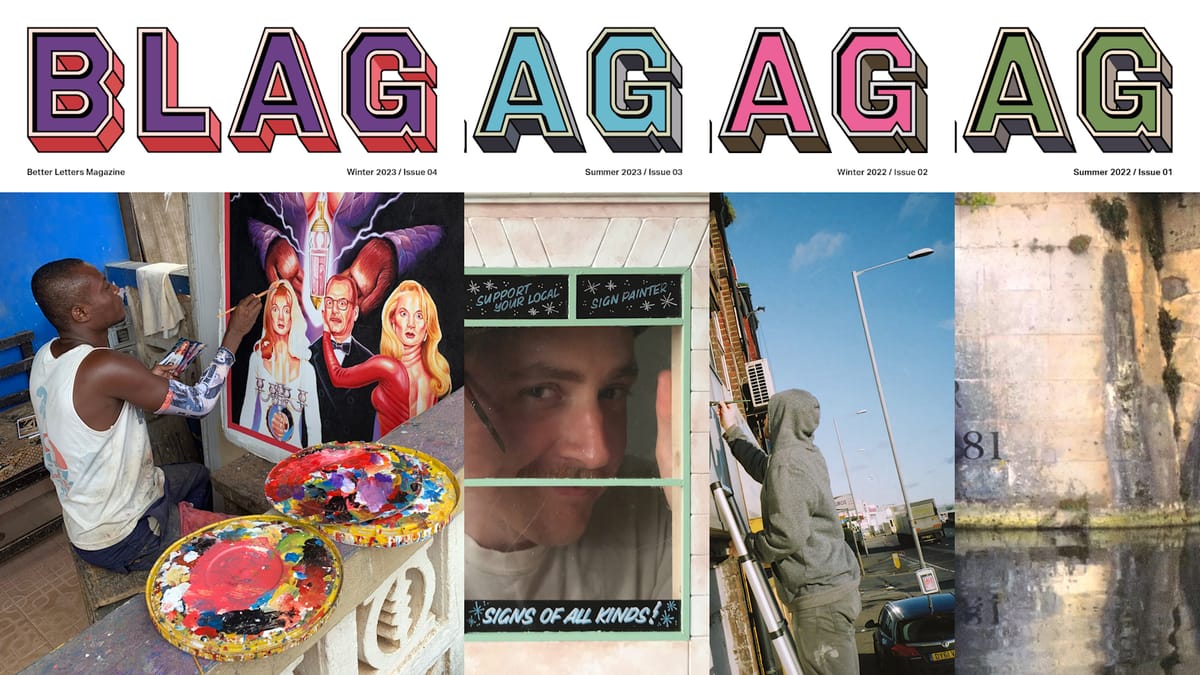What's Inside Issue 07 of BLAG, the Letterheads Special?
BLAG's first special issue applies an IOAFS twist to its worldwide adventures in sign painting.
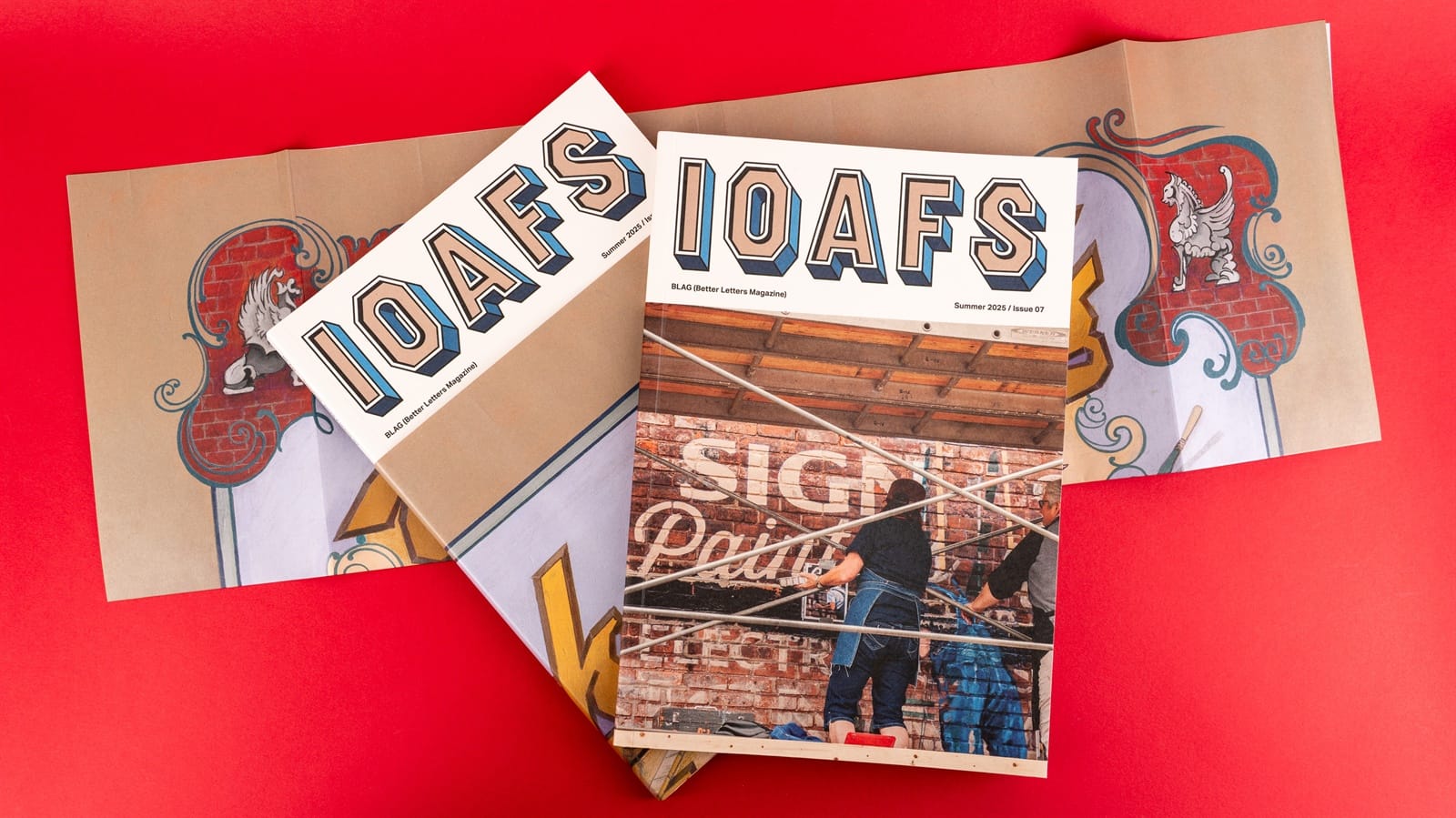
The seventh instalment of our adventures in sign painting craft, community, and culture is the Letterheads special, produced to coincide with the 50th anniversary of the movement. It launched at last month's meet, and is now being delivered to members around the world.
Let's take a look inside this extra-large edition, with 128 advertising-free pages packed with IOAFS goodness...
Around the Cover
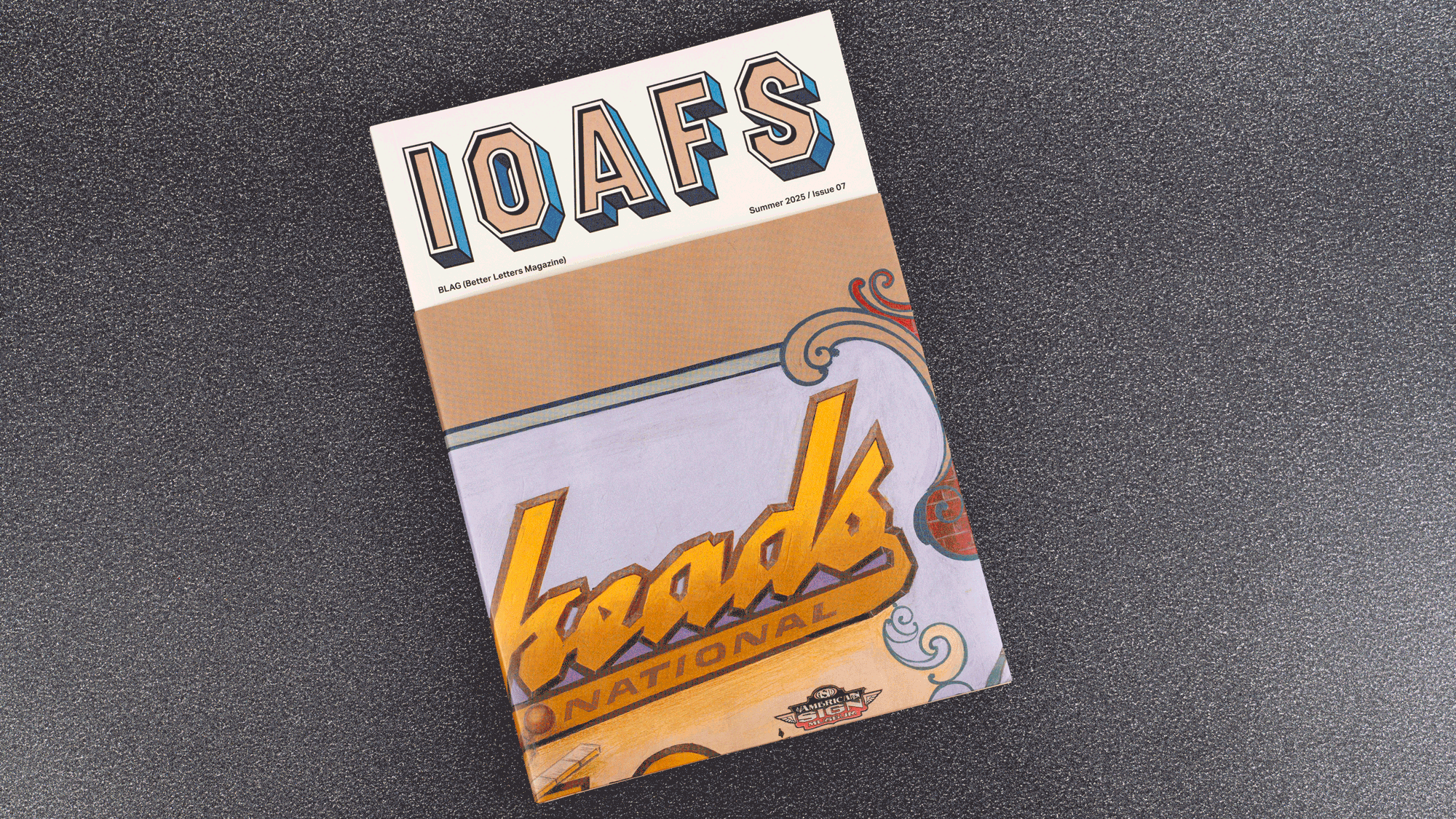
After removing the magazine from the envelope, the first thing that greets you is the limited edition cover wrap. It's a commemorative poster by original Letterhead Noel B. Weber and unfolds to reveal the original pencil sketch on the back and the final colour rendering on the front.
Noel displayed both pieces of artwork at the Letterheads 50 event, and they have been reproduced beautifully in print at 88 x 59 cm (23¼ x 34¾ in).
The latest issue of BLAG in print ships exclusively to members worldwide twice each year. Join today to get your first copy sent straight away.
On the Cover
You may already have noticed that the masthead has changed from the usual BLAG to IOAFS. This acronym is the Letterheads motto, and there is plently about it inside BLAG 07. The lettering itself is once again adapted by UTILE from the Gothic Paneled face in Specimens of Chromatic Wood Type, Borders, etc.
The photo is then a picture taken by Natalie Grilli at the Letterheads 40 event in 2015. It shows Elaine Wallis and Noëlla Cotnam at work on the Signs of the Times mural that Elaine designed in a trompe-l'œil style for the American Sign Museum. The story of the sign itself is this issue's 'Ghost Sign Corner'.
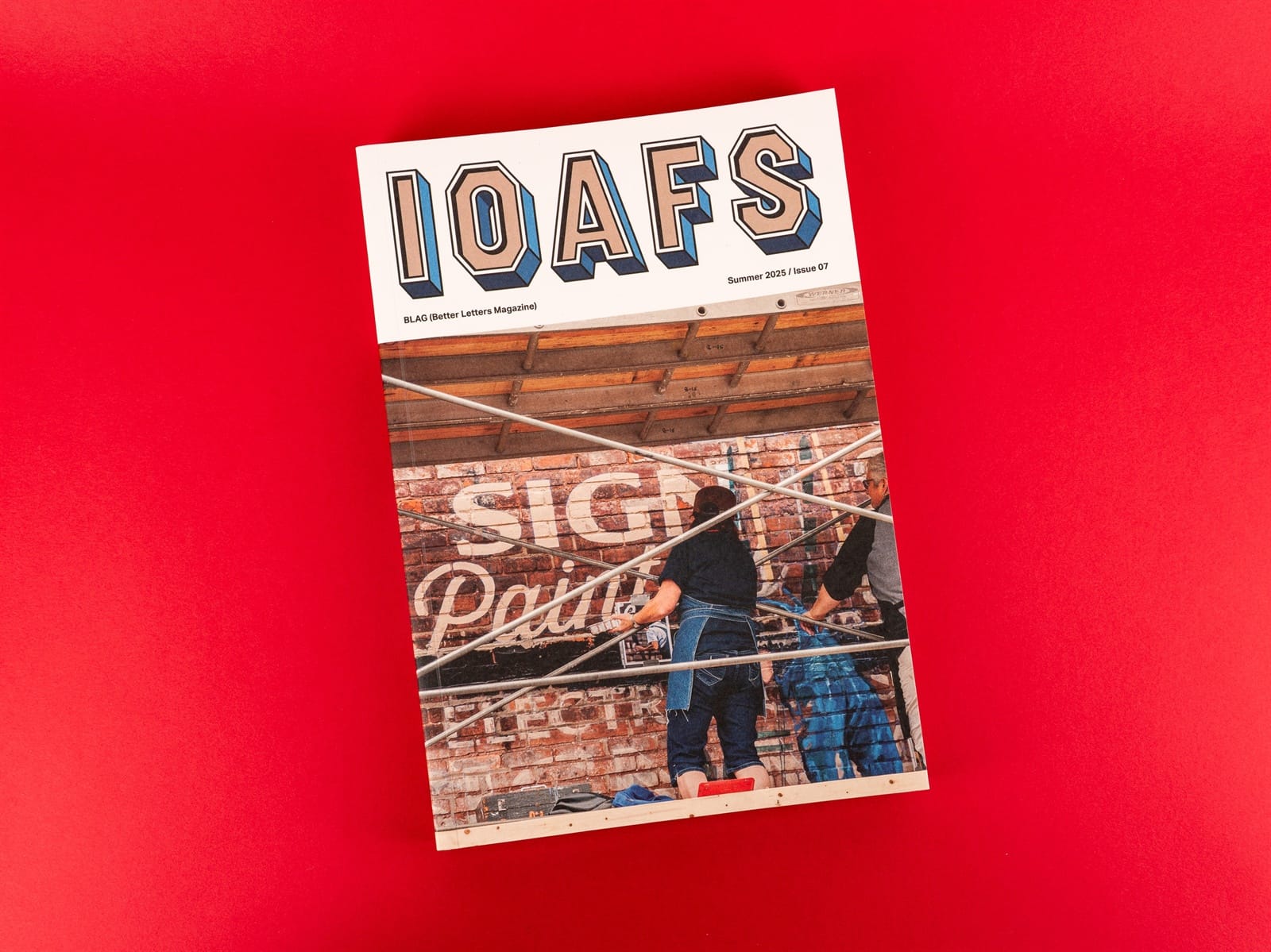
Contents
For this special edition of BLAG, I invited original Letterhead Mark Oatis to join me as a guest editor. Mark has penned an IOAFS-themed 'Guest Editor's Letter' and a reflective piece about his own Letterheads journey, and some of the miracles he's experienced on it.
In addition to these written contributions, Mark's input was invaluable as we sought to tell the story of the movement's last 50 years. I learned so much from his memories and wider network, and much of this has made its way into the magazine.
As we worked on the issue, more and more material, contemporary and historical, kept arriving. While lots inevitably ended up on the cutting room floor, there was simply too much to leave out, and so the page count kept growing. The result is an issue that's 60% bigger than usual, with 128 internal pages and two 'mega features' within these.
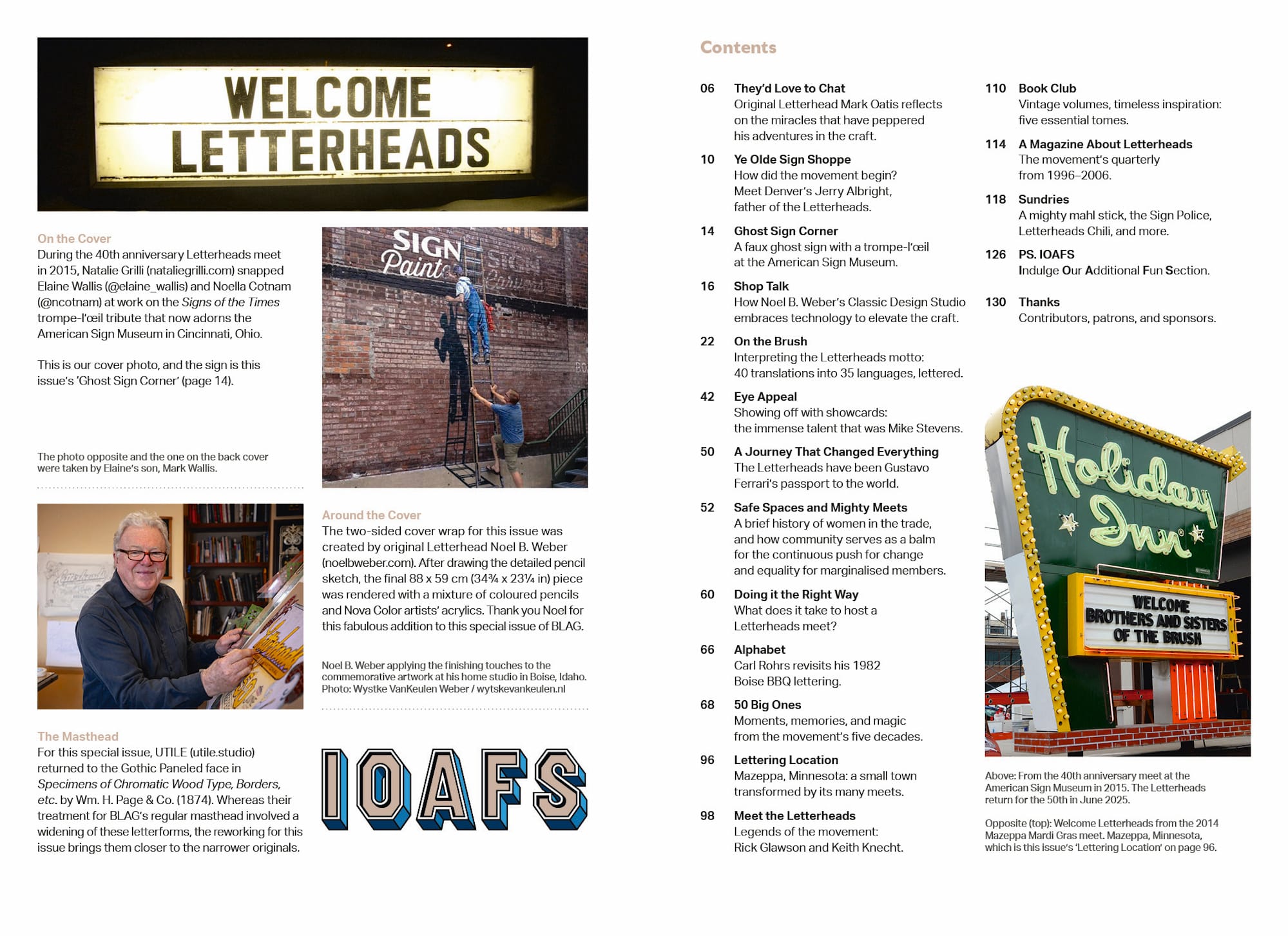
Before getting deeper into it, I'd like to thank our wonderful sponsors, whose continued backing of me and my work is a big part of making BLAG what it is:
For this special issue, additional sponsorship support was provided by David Miller, Mary Roberts, and Tod Swormstedt.
And a big shout out to BLAG's patrons: Blackout Signs & Metalworks; Chicago Sign Systems; Colossal Media; Dragging the Line; John Moran; Right Way Signs; Romana Schrift; Sepp Leaf Products; Skiltmaler Gundersen; Studio Sign Co.; Through the Wood Signs; and W&B Gold Leaf.
Mega Features
Features in BLAG are usually around 8–10 pages long, but this has more than doubled for this issue's two biggest pieces.
The first is a look back at the evolution of the Letterheads, from its origins in Denver, Colorado, to the international movement that thrives today. Each stage in the journey is accompanied by reflections from those that have been involved along the way, with the full feature stretching to a massive 28 pages.

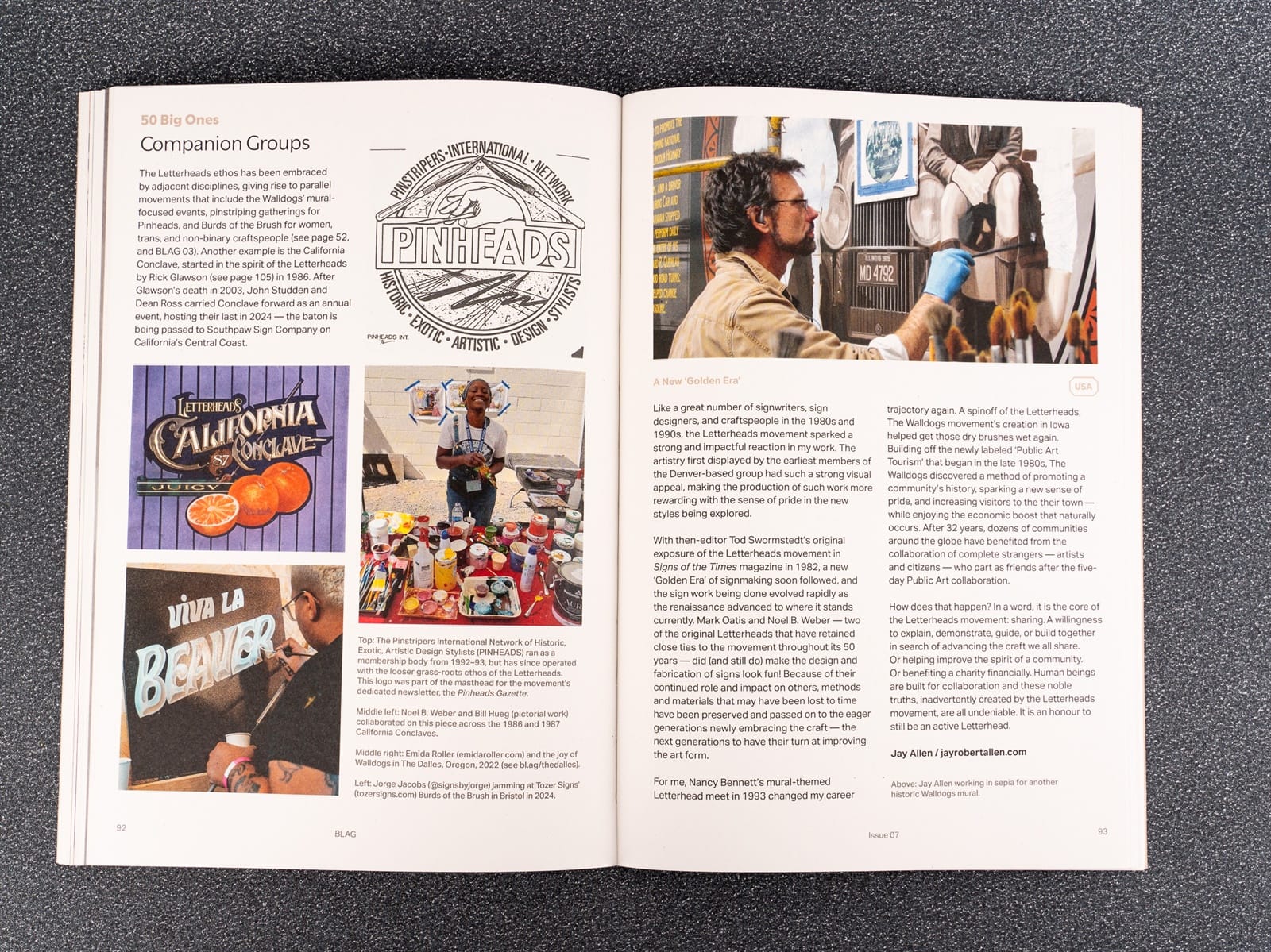
'50 Big Ones: Moments, Memories, and Magic from the Movement's Five Decades' also looks at other groups that have emerged from the Letterheads, including the Walldogs, Pinheads, and Burds of the Brush.
The second mega feature is the result of my call out to sign painters around the world to interpret the IOAFS motto in their own language. I was blown away by the response to this, and the result is 20 pages with 40 panels representing 35 languages. These are displayed in the usual 'On the Brush' format, with notes and observations on the languages, the meaning of the motto, and the panels themselves.
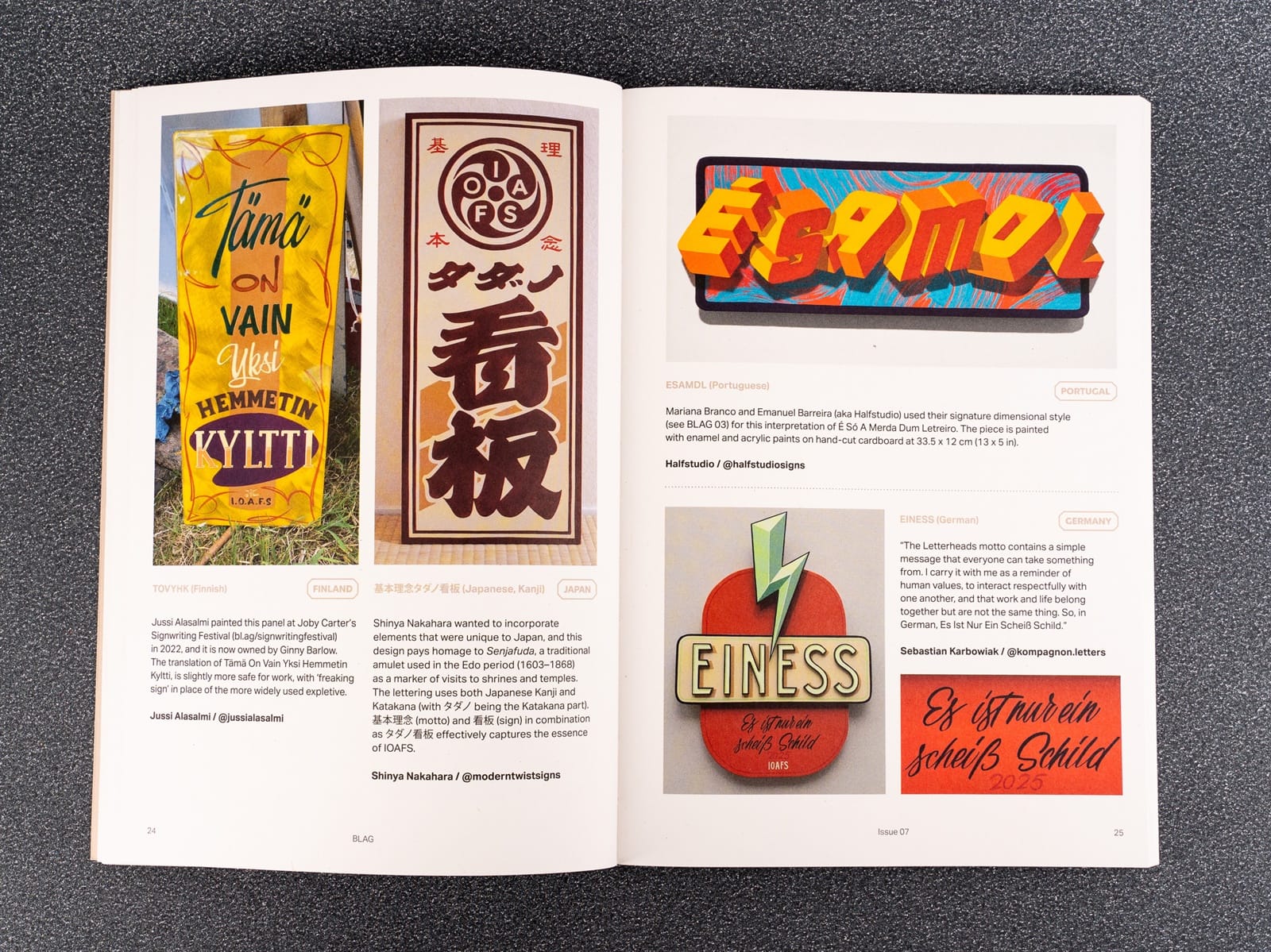
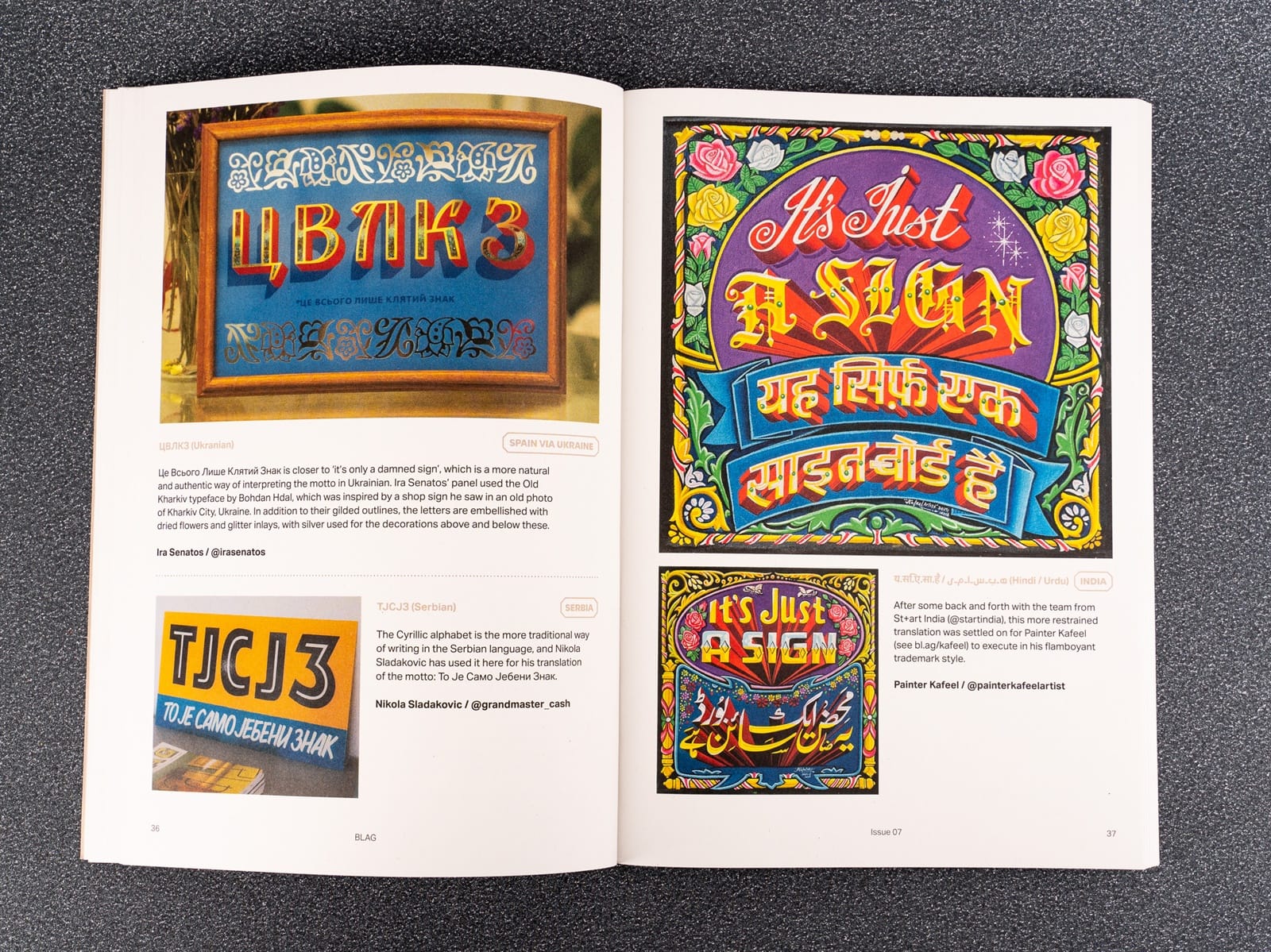
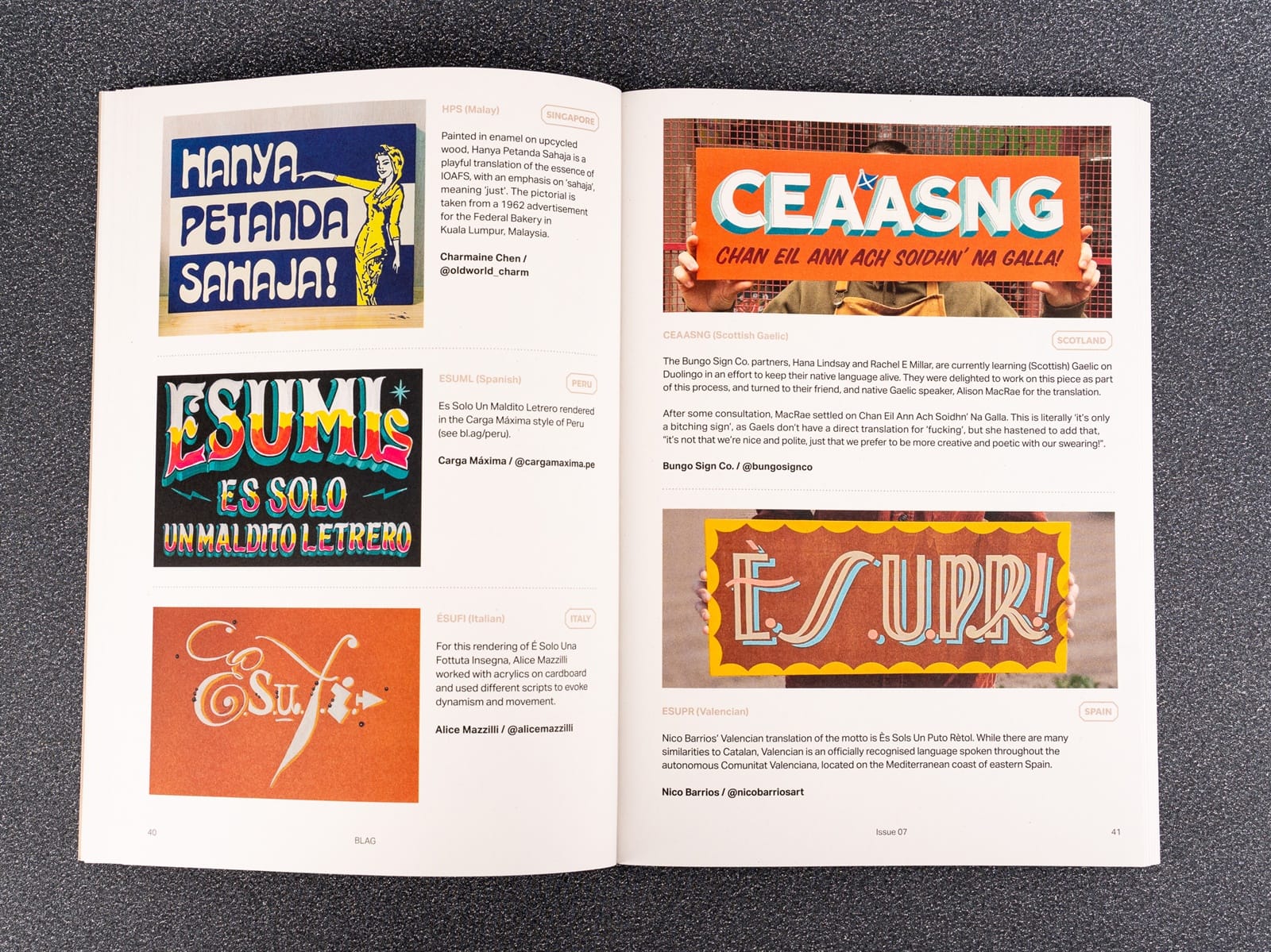
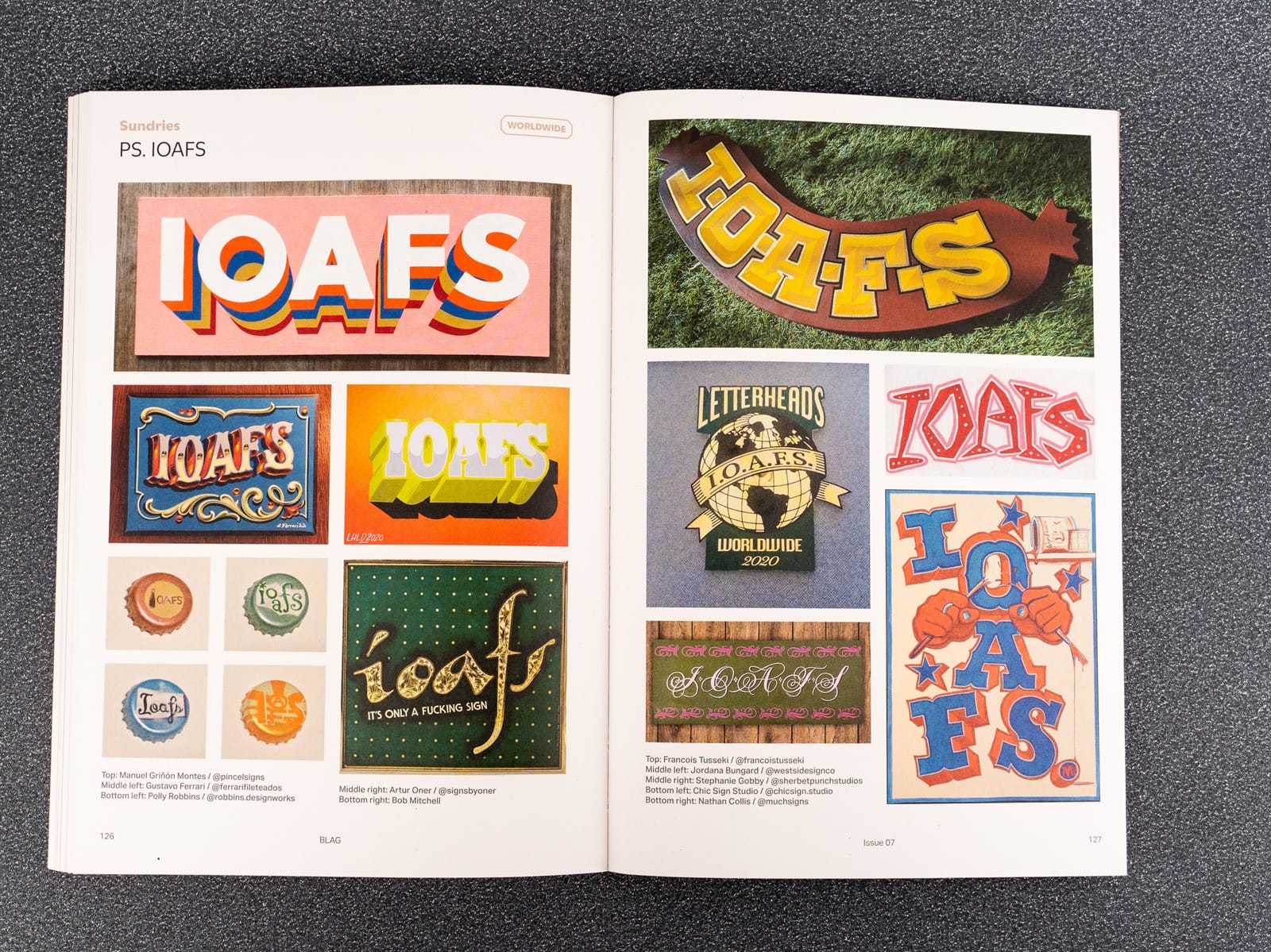
Finnish, Japanese (Kanji), Portuguese, German, Ukranian, Serbian, Hindi, Urdu, Malay, Spanish, Italian, Scottish Gaelic, and Valencian are just some of the languages into which the IOAFS motto has been translated and interpreted. Then, on the final four pages, you'll find executions in its original English form.
It's All About the People
The thing that continues to amaze me about the Letterheads movement is how it has thrived entirely on the voluntary efforts of those involved. Everything from hosting to teaching is driven by the same desire to keep the craft alive, and to ensure that the next generation benefits from the knowledge and skills of those that came before them.
This issue's 'Ye Olde Sign Shoppe' profiles Jerry Albright, one of the movement's unsung heroes who has been dubbed the 'father of the Letterheads'.
Jenna Homen then talks to original Letterhead Noel B. Weber about the evolving role that technology has played in his craft over the years for an extended 'Shop Talk' column.
And, in 'Meet the Letterheads', we honour Keith Knecht and Rick Glawson, both of whom were major influences on the movement.
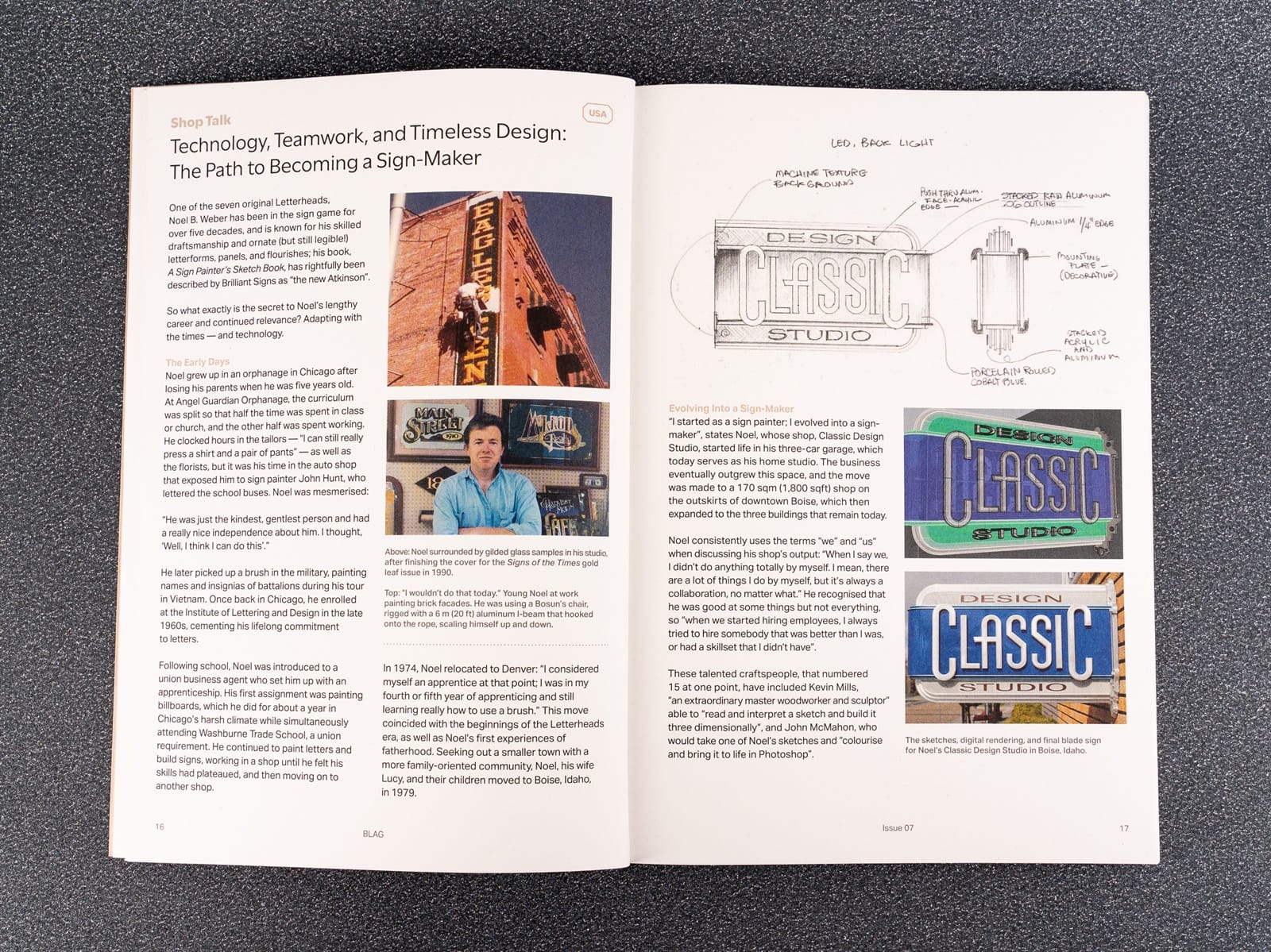
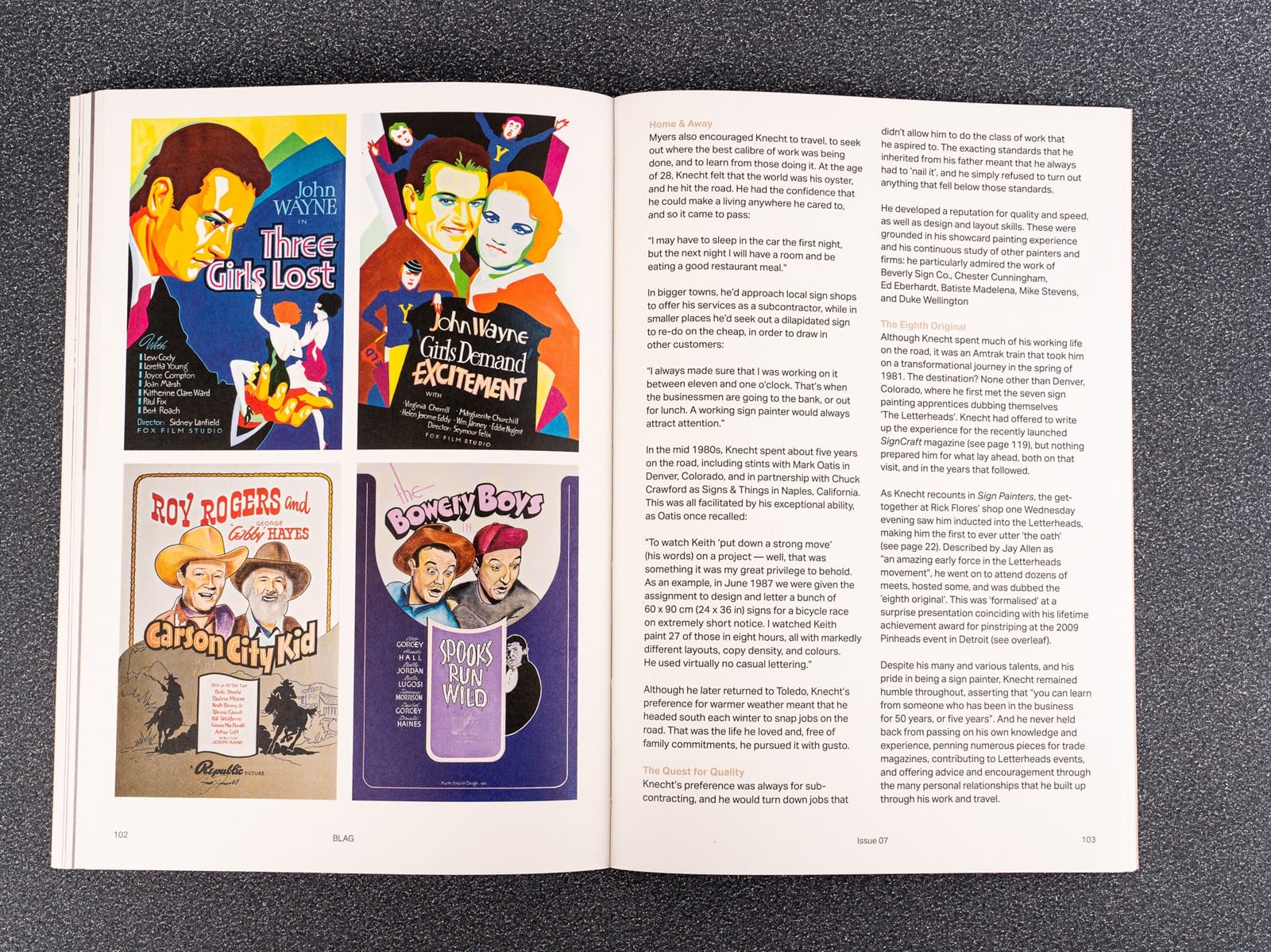
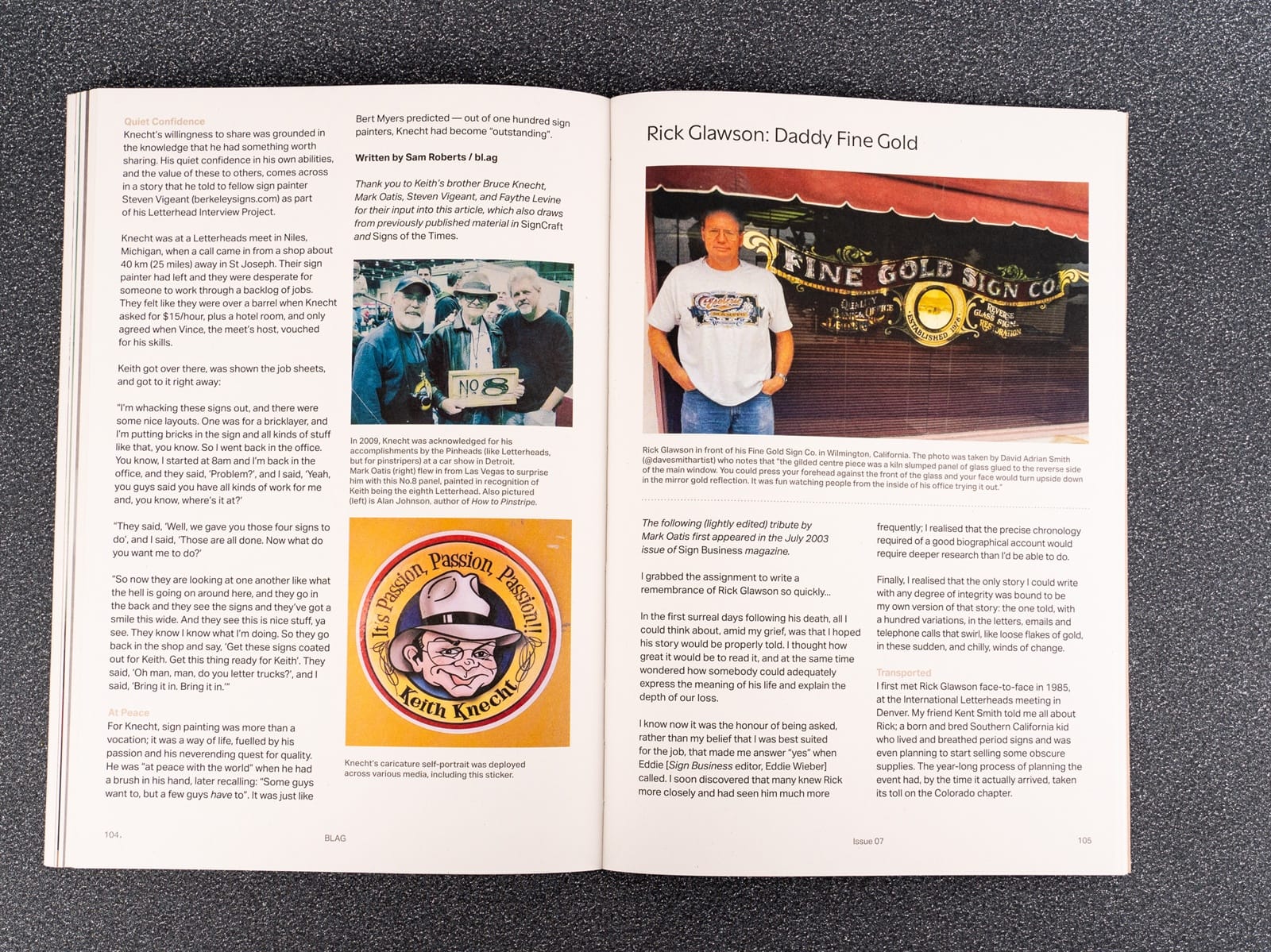
'Shop Talk' with Noel B. Weber and extended profiles of Keith Knecht and Rick Glawson for 'Meet the Letterheads'.
Visual Stimulation
Letterheads meets are always a feast for the eyes, and some of that visual stimulation comes through in the eight-page sampling of Mike Stevens' showcard work. The guest alphabet is then from Carl Rohrs, revisiting his work on the invitation for Noel B. Weber's Boise Barbeque meet in 1982.
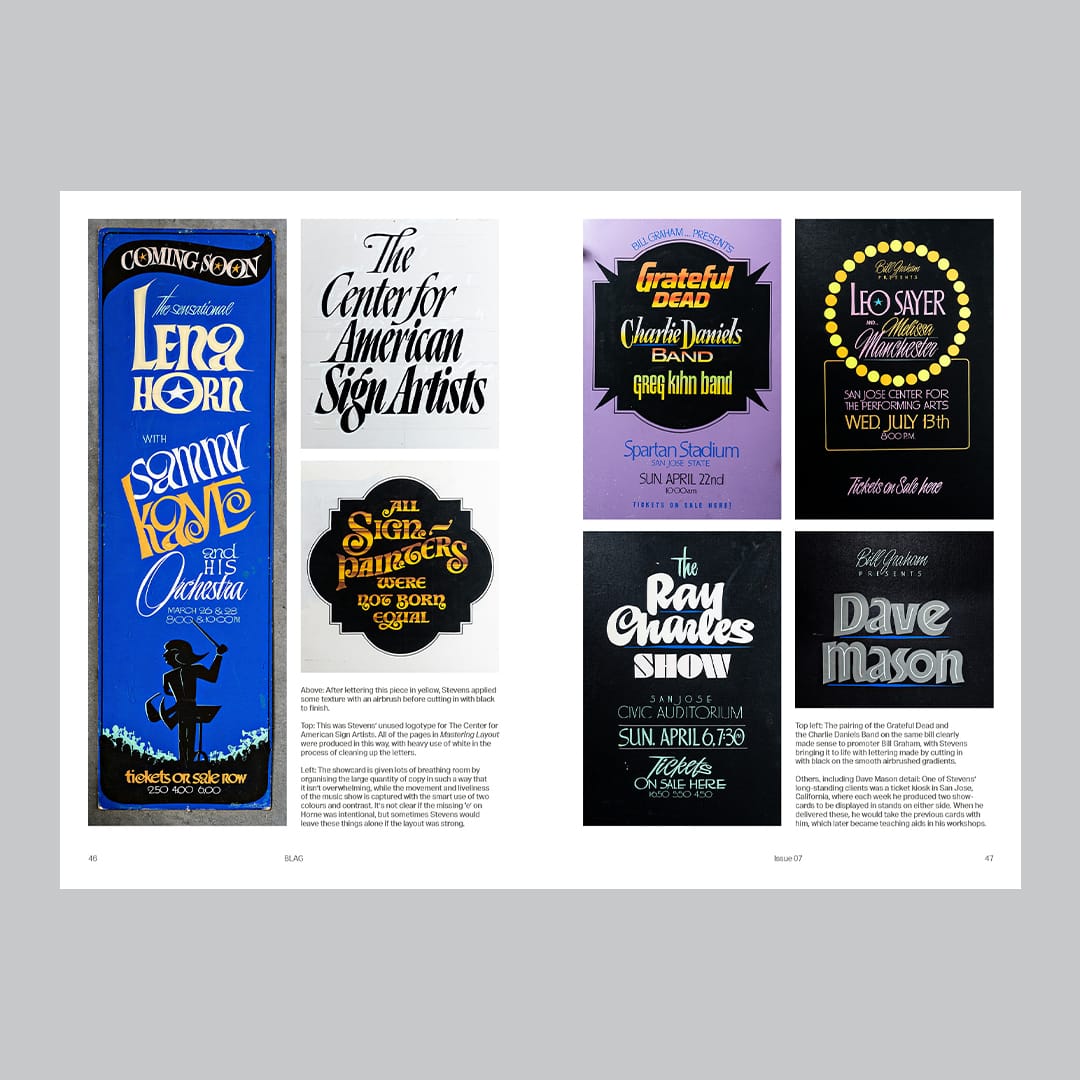

Most of this work from Mike Stevens is now on display at the American Sign Museum, while Carl Rohrs paired his Barbeque alphabet with examples of its use by original Letterhead John Frazier.
Place- and Space-Making
The issue's 'Lettering Location' is Mazeppa, Minnesota, the former home of seasoned Letterhead and serial host, Mike Meyer.
I borrowed Alex Perry's 'Doing It the Right Way' column to present a Q+A for those interested in hosting an event, and then Gustavo Ferrari shares his experience of travelling the world to attend meets and what he brings back from these to his home in Argentina.
Then, in another extended feature, Meredith Kasabian looks at the history of women in the trade, and the recent community building that has been taking place to create safe and supportive spaces for this and other marginalised groups.

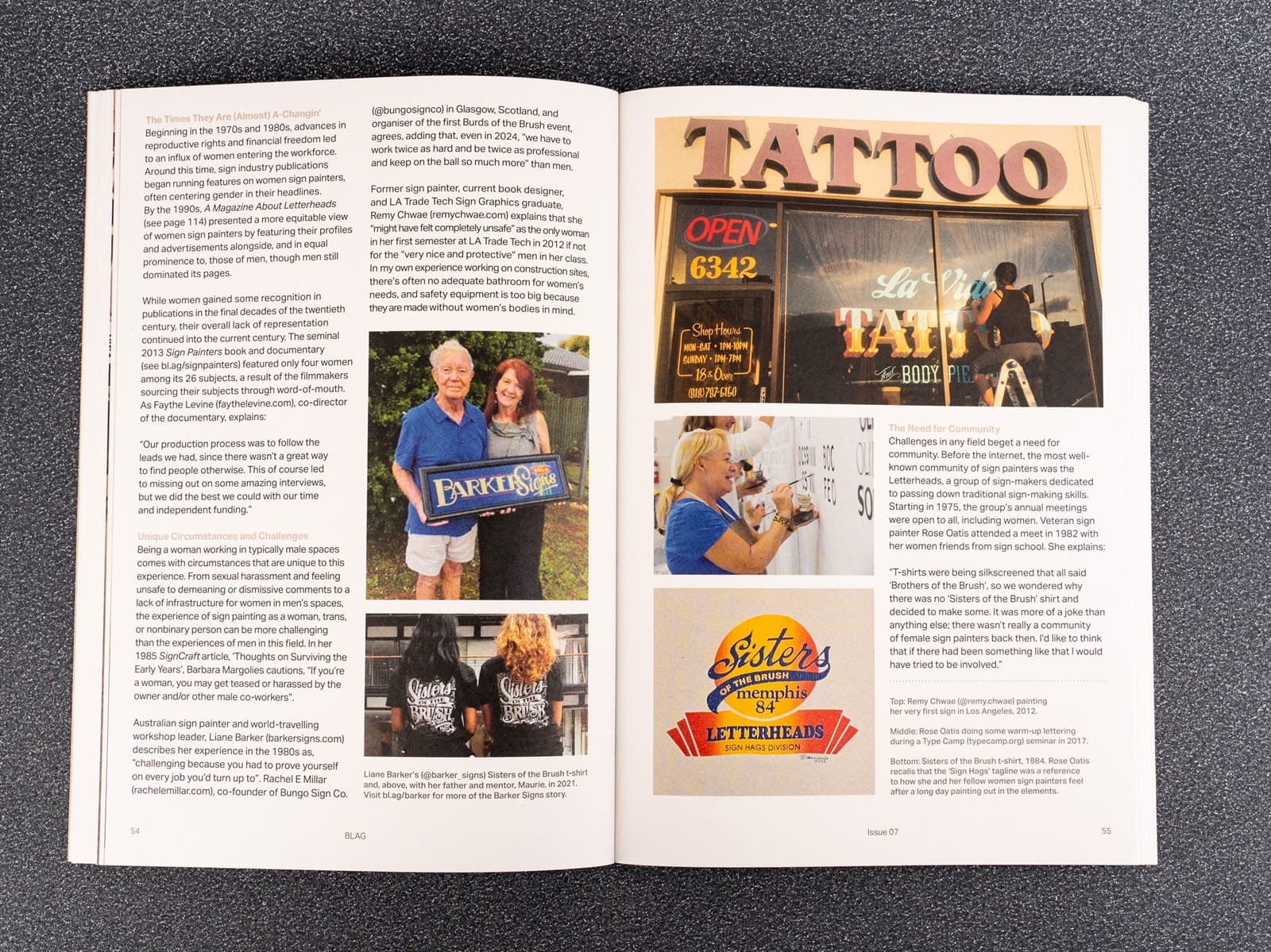
'Safe Spaces and Mightty Meets: Representation and Community for Women, Trans, and Nonbinary Sign Painters' includes a look at recent community building initiatives such as the Pre-Vinylettes and Burds of the Brush.
Print Never Dies
Someone once said to me that whatever happens to this digital world that we now inhabit, there will certainly be copies of BLAG getting pulled down from sign shop shelves in 50 years' time. For this issue's 'Book Club', Jason Carne pulled five classic texts from his Lettering Library shelves, and I talked to those that came before me in the form of David Butler and Doc Welty of A Magazine About Letterheads.
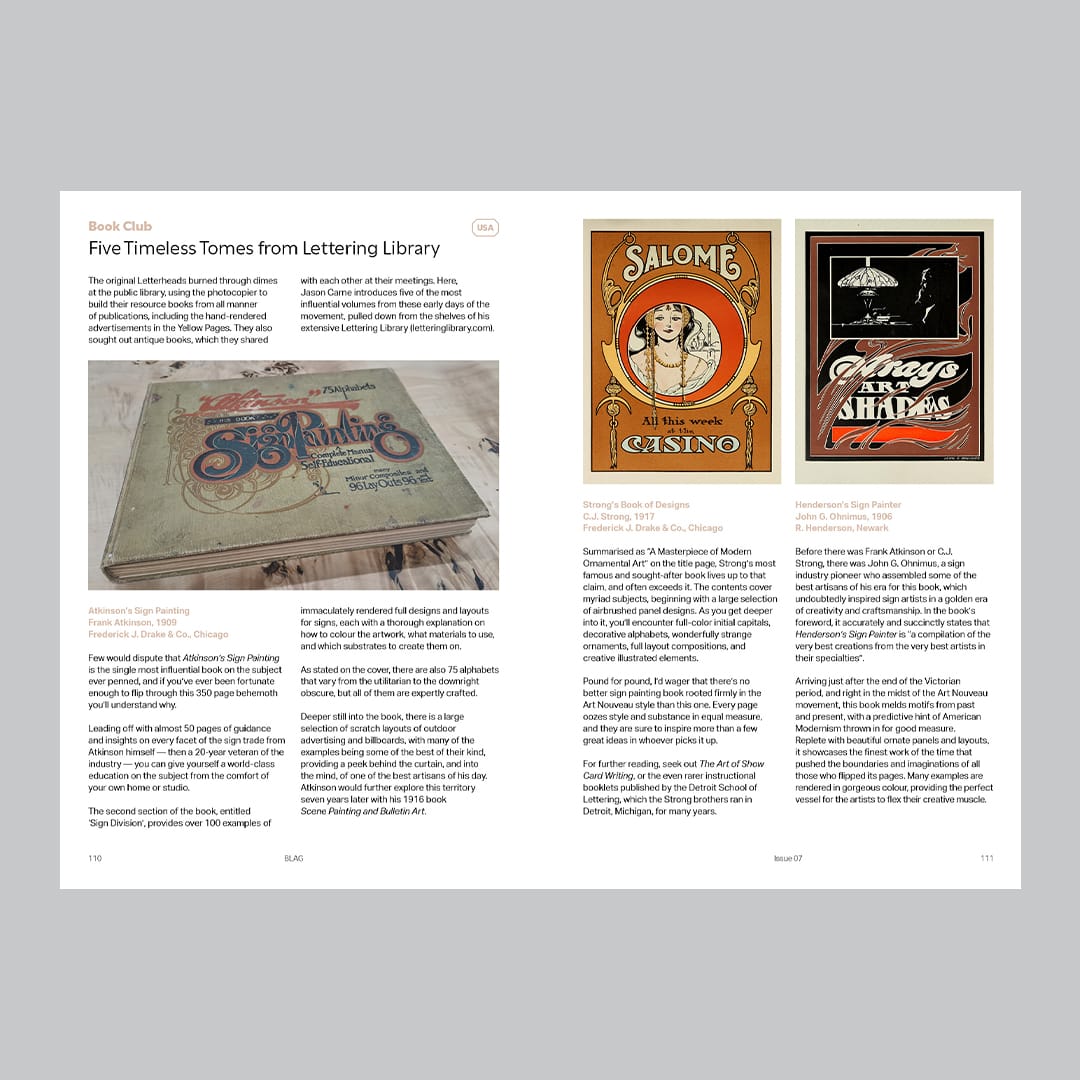

Some of the vintage sign painting publications from the 'Book Club' and a sampling of material from A Magazine About Letterheads.
Sundries
In the closing pages of the issue, you'll find the usual medley of material that includes BLAG's first ever recipe, a visit from the Sign Police, a mighty mahl stick, and much more.
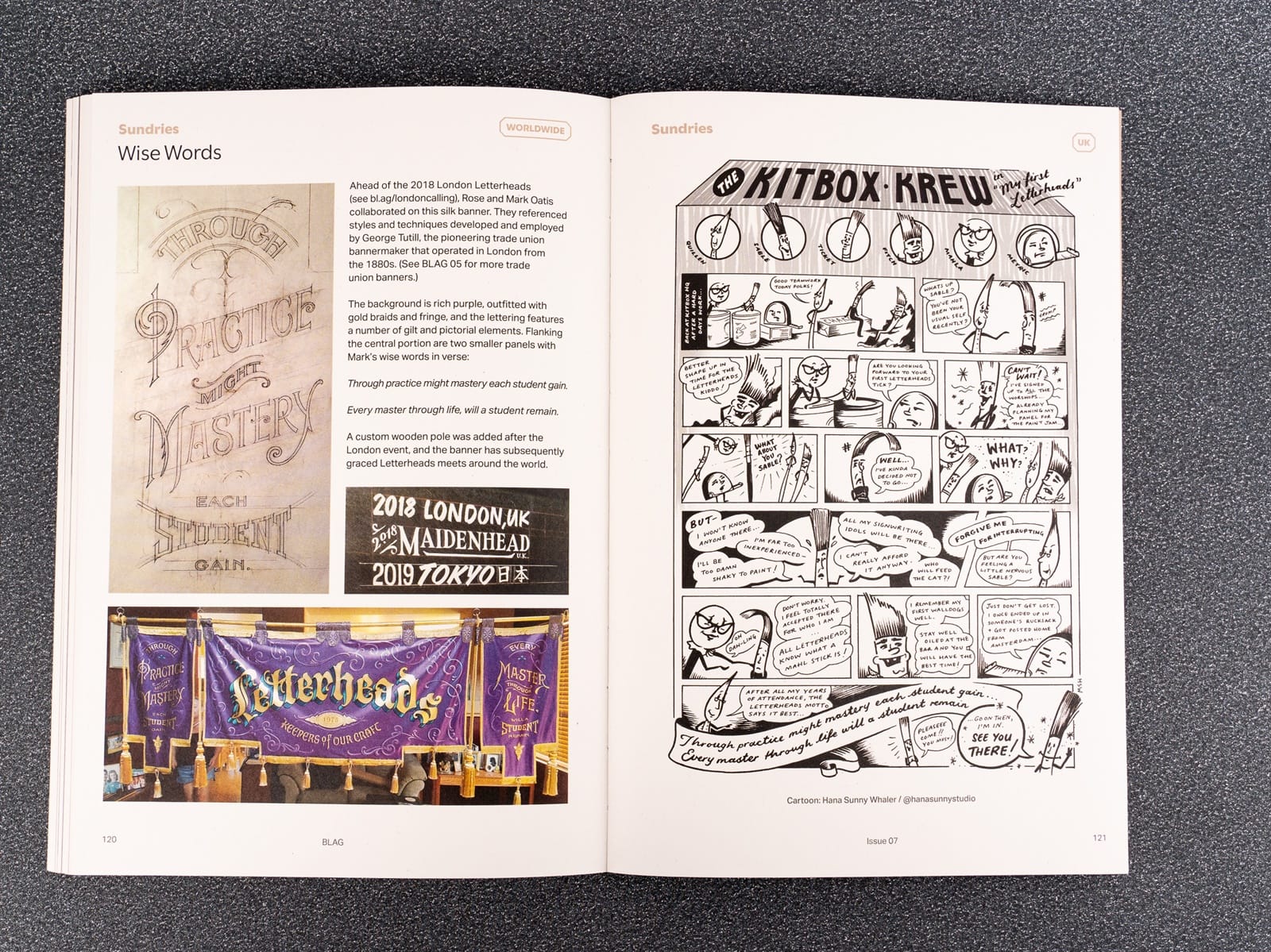
Thanks
The contributions of 90 people from around the world made BLAG 07 possible, and it was once again a pleasure to collaborate with so many brilliant people. Thank you all.
Nothing happens without the members, patrons, and sponsors that fund all the work that goes into the magazine, so thank you!
If you're not a member already, then join today to get the latest issue, and more, delivered directly to your mail/post box.
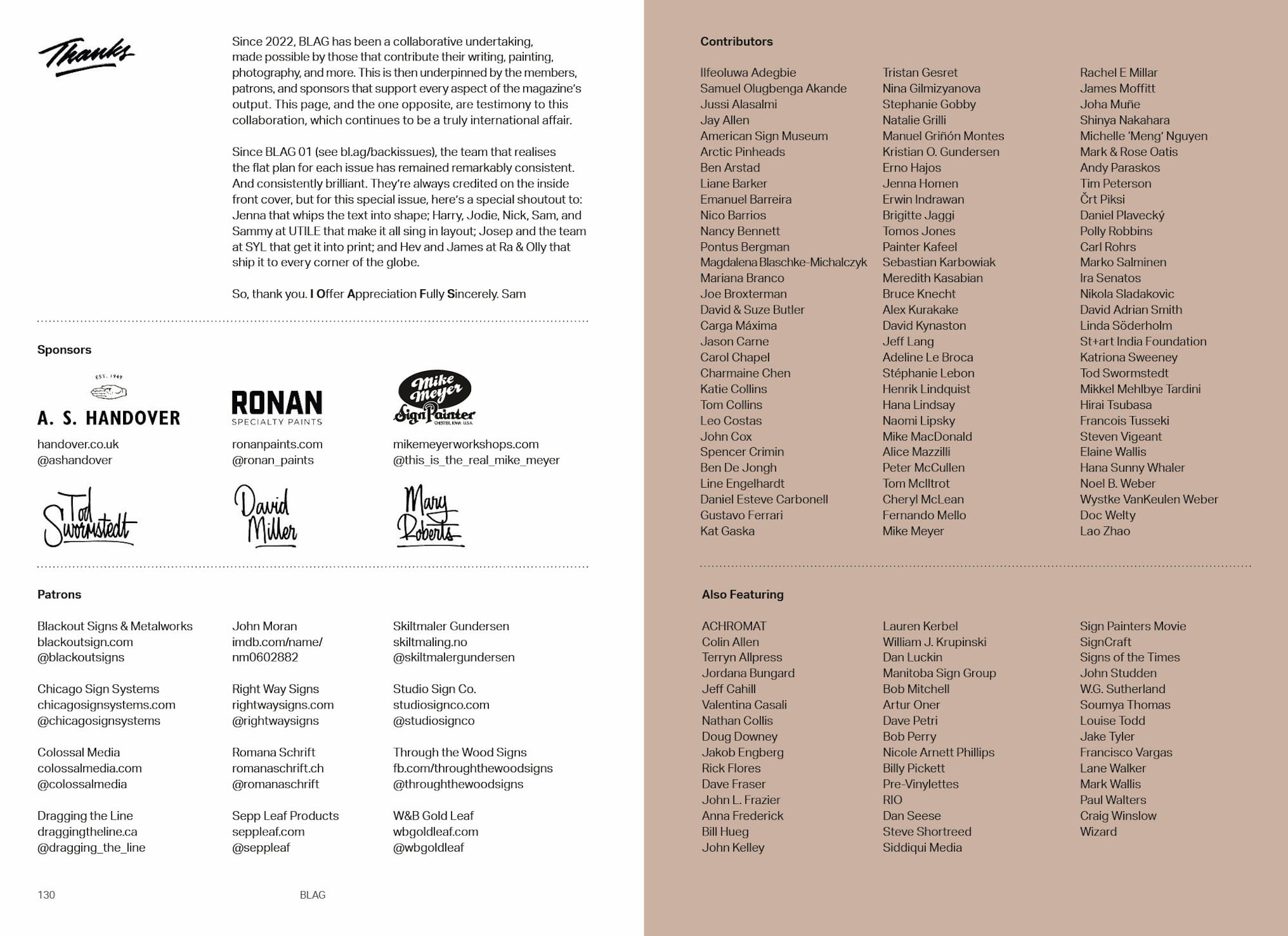
Thanks also to the wonderful team that brings the final print magazine to fruition: Jenna Homen on sub-editing; UTILE on design; SYL, The Art of Books on print; and Ra & Olly on distribution.
Fonts in Use are Aktiv Grotesk by Dalton Maag and Utile by Sibylle Hagmann from Kontour.
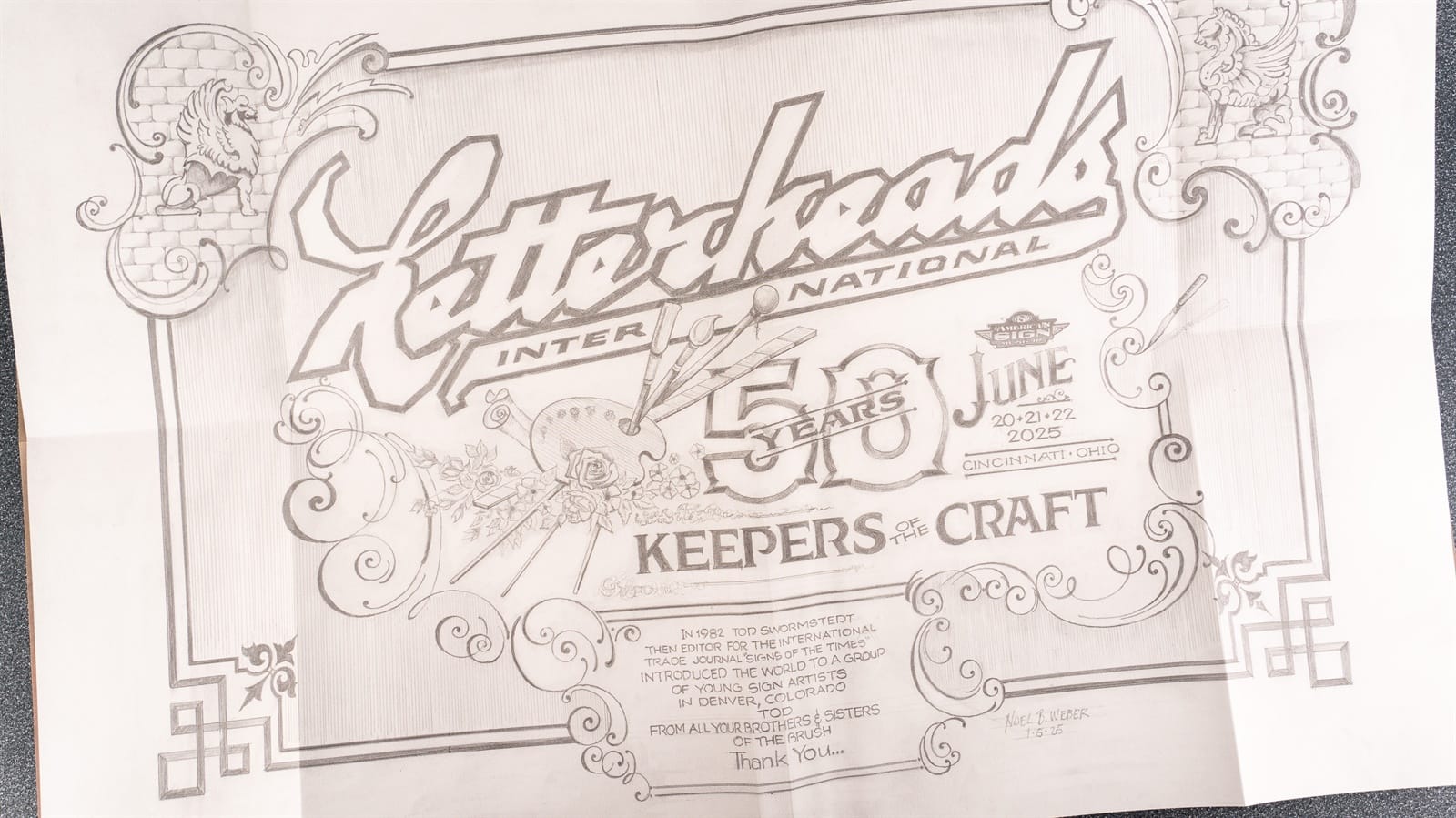
BLAG Back Issues
